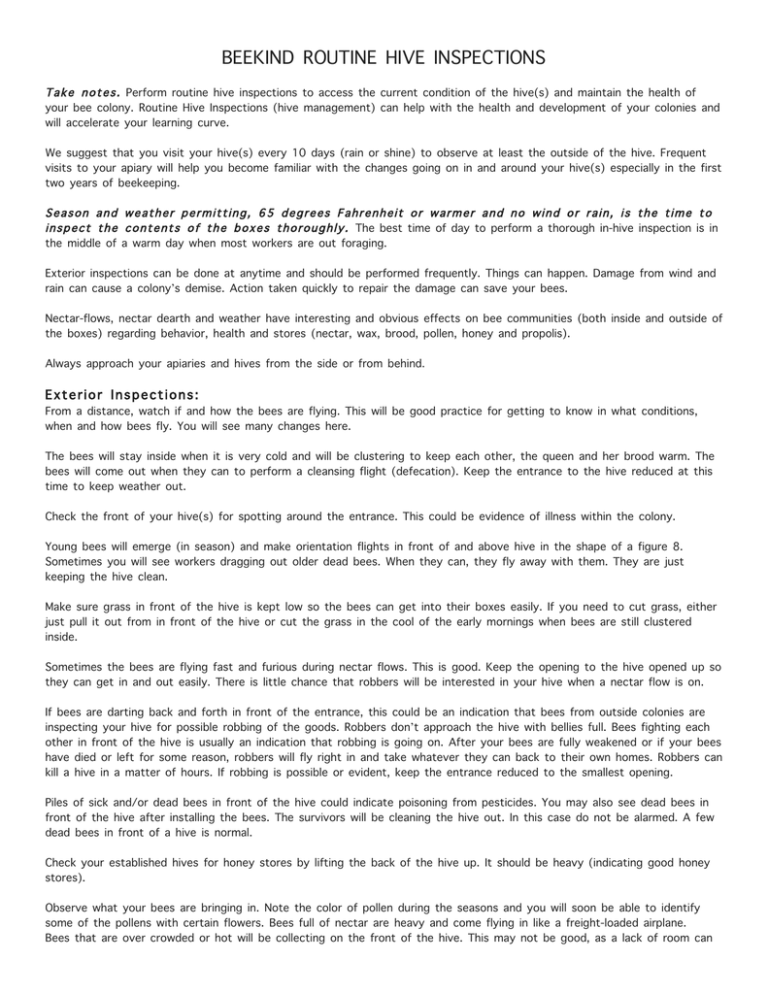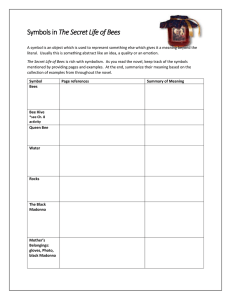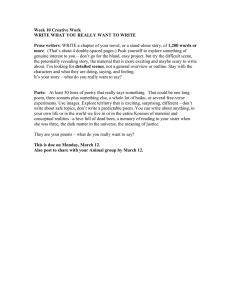
BEEKIND ROUTINE HIVE INSPECTIONS
Take notes. Perform routine hive inspections to access the current condition of the hive(s) and maintain the health of
your bee colony. Routine Hive Inspections (hive management) can help with the health and development of your colonies and
will accelerate your learning curve.
We suggest that you visit your hive(s) every 10 days (rain or shine) to observe at least the outside of the hive. Frequent
visits to your apiary will help you become familiar with the changes going on in and around your hive(s) especially in the first
two years of beekeeping.
Season and weather permitting, 65 degrees Fahrenheit or warmer and no wind or rain, is the time to
inspect the contents of the boxes thoroughly. The best time of day to perform a thorough in-hive inspection is in
the middle of a warm day when most workers are out foraging.
Exterior inspections can be done at anytime and should be performed frequently. Things can happen. Damage from wind and
rain can cause a colony’s demise. Action taken quickly to repair the damage can save your bees.
Nectar-flows, nectar dearth and weather have interesting and obvious effects on bee communities (both inside and outside of
the boxes) regarding behavior, health and stores (nectar, wax, brood, pollen, honey and propolis).
Always approach your apiaries and hives from the side or from behind.
Exterior Inspections:
From a distance, watch if and how the bees are flying. This will be good practice for getting to know in what conditions,
when and how bees fly. You will see many changes here.
The bees will stay inside when it is very cold and will be clustering to keep each other, the queen and her brood warm. The
bees will come out when they can to perform a cleansing flight (defecation). Keep the entrance to the hive reduced at this
time to keep weather out.
Check the front of your hive(s) for spotting around the entrance. This could be evidence of illness within the colony.
Young bees will emerge (in season) and make orientation flights in front of and above hive in the shape of a figure 8.
Sometimes you will see workers dragging out older dead bees. When they can, they fly away with them. They are just
keeping the hive clean.
Make sure grass in front of the hive is kept low so the bees can get into their boxes easily. If you need to cut grass, either
just pull it out from in front of the hive or cut the grass in the cool of the early mornings when bees are still clustered
inside.
Sometimes the bees are flying fast and furious during nectar flows. This is good. Keep the opening to the hive opened up so
they can get in and out easily. There is little chance that robbers will be interested in your hive when a nectar flow is on.
If bees are darting back and forth in front of the entrance, this could be an indication that bees from outside colonies are
inspecting your hive for possible robbing of the goods. Robbers don’t approach the hive with bellies full. Bees fighting each
other in front of the hive is usually an indication that robbing is going on. After your bees are fully weakened or if your bees
have died or left for some reason, robbers will fly right in and take whatever they can back to their own homes. Robbers can
kill a hive in a matter of hours. If robbing is possible or evident, keep the entrance reduced to the smallest opening.
Piles of sick and/or dead bees in front of the hive could indicate poisoning from pesticides. You may also see dead bees in
front of the hive after installing the bees. The survivors will be cleaning the hive out. In this case do not be alarmed. A few
dead bees in front of a hive is normal.
Check your established hives for honey stores by lifting the back of the hive up. It should be heavy (indicating good honey
stores).
Observe what your bees are bringing in. Note the color of pollen during the seasons and you will soon be able to identify
some of the pollens with certain flowers. Bees full of nectar are heavy and come flying in like a freight-loaded airplane.
Bees that are over crowded or hot will be collecting on the front of the hive. This may not be good, as a lack of room can
cause your bees to swarm and diminish the numbers in their hive. Be sure to add boxes to the top for the bees to grow
into. The bees will expand during warm days and need more room. Provide an extra (bottom most) box with empty frames
for the bees to cluster on cool nights and to expand into.
You should have a screened bottom board on your hive with a monitoring tray. An inspection of the monitoring tray provides
clues as to what is going on inside the hive boxes and these inspections can be performed at any time without opening the
hive. Spraying your tray with a vegetable oil will cause the mites and debris to stick to the tray. Observe the tray for:
varroa mites crawling on the board (indicating levels of infestation)
pollen pellets (indicating brood rearing)
white wax debris (indicating nectar flow and wax building)
dark wax debris (indicating brood hatching)
wax moth feces (indicating pest infestation)
chalkbrood mummies (indicating dampness in the hive)
Interior Inspections:
Wear protective clothing and start your smoker smoking. Have your hive tools handy and be prepared to take notes.
Approaching from the side, move gently and quietly with going smoker in hand, puff a couple puffs of smoke into the
entrance of the hive. Glide your smoker to top of the hive and lift the telescoping cover up several inches and puff a couple
puffs of smoke into the vent of the inner cover. Close. Put the smoker in a safe place (away from dry grass) and wait one
minute. Smoke yourself and hands a lot and the bees a little. Do not smoke entrance when robbing is possible.
Lift the telescoping hive cover straight up and lay it upside down next to your hive. With a hive tool in hand, slip the flat
end of the hive tool under the corner of the inner cover and gently pry up till it is loose. Note: once the bees have
propolized their hive, the inner cover will be sticky and you will hear/feel a crack when you pry it open and you may need to
slide your tool around the inside of the cover and continue prying to loosen it all around. Give the bees a puff of smoke at
this time. Place the inner cover upside down on top of the telescoping cover.
Now you will be looking over the frames and hopefully viewing many bees. Carefully lift out a follower board or outer most
frame. Now, one frame at a time, pull one frame towards you and up. Avoid rolling bees between frames! Make mental and
physical notes (as much as possible) of all you see on each frame. Do not attempt to rearrange the frames when comb
building is underway or without a very good reason. Before closing up your hive, make sure all frames/follower boards are
replaced and touching shoulders!
During inspections, check for the presence and amounts of eggs, larva, sealed brood, pollen, nectar and honey. Review your
notes and books before and after inspections. Check for dampness, spotty brood, punctured brood cappings, sick larvae,
disease, pests, etc.) Look for indications of queen related problems: such as drone-laying workers or queenlessness. Take
action. If in doubt, consult your mentor or bee club. Avoid leaving things in the hive that don’t belong in the hive (tools?).
Make sure the frames are straight and follower boards are lined up correctly throughout the hive.
Summer Hive Inspections. (Plan and be prepared)
In the summer and during periods of nectar dearth, the bees are more irritable. Always plan your inspections. When opening
the hive, what do you notice and why are you going in? Act swiftly and gently.
a. Choose favorable conditions. Open hives in good weather in the middle of the day when many bees are foraging.
b. Keep inspections to a minimum and know why you are opening the hive.
c. Peak through the upper part of the hive.
d. Have a good reason to open the hive (satisfying one's curiosity is not a good reason).
e. Gather information rapidly.
f. Make sure you do more good than harm.
Late winter or early spring hive inspections. (Plan and be prepared)
65 degrees Fahrenheit or warmer and no wind or rain
a. Choose favorable conditions. Open hives in good weather in the middle of the day when many bees are foraging.
b. You should see a good amount of bees when you look through the feeder slot or inner cover opening.
c. Avoid breaking clusters. Leave clustered bees alone
d. Remove a follower board or outer frame (to facilitate manipulations).
e. Access the future of the colony. Examine brood frames for eggs and larvae. Accessible stores/available space?
f. Don’t bother looking for the queen. The brood and the bees tell you more about her than actually seeing the queen!)
h. Don’t chill the brood and queen and don’t have brood frames out of hive for longer than a minute or two.
i. Evaluate hive strength/needs: Are they weak/sickly? Do they have food? Do they look healthy?
j. Keep good records and always review your notes and take action in a timely fashion.
Copyright 2012 Beekind Honey and Beekeeping Supply, all rights reserved.






